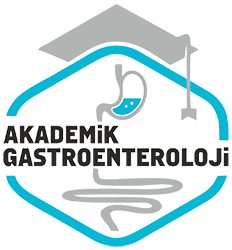Nisan 2018
Konya il merkezinde gastroözofageal reflü hastalığı prevalansi
Prevalence of gastroesophageal reflux in the central province of Konya
- Ana Sayfa
- Sayılar
- Nisan 2018
- Konya il merkezinde gastroözofageal reflü hastalığı prevalansi...
2Konya Farabi Hastanesi, Iç Hastaliklari Klinigi, Konya
3Necmettin Erbakan Üniversitesi, Meram Tip Fakültesi, Gastroenteroloji ve Hepatoloji Bilim Dali, Konya
4SBÜ Kanuni Sultan Süleyman Egitim ve Arastirma Hastanesi, Gastroenteroloji ve Hepatoloji Klinigi, Istanbul
Özet
Giriş ve Amaç: Gastroözofageal reflü hastalığı üst gastrointestinal kanalin sik rastlanilan bir hastalığıdir. Anatomik lokalizasyonu nedeniyle özofagusa komsulugu olan organlarin hastalıklarıni taklit edebildigi gibi; asil hastalığın şikayetini maskeleyebilmekte hatta olusan komplikasyonlari da baska organlarin fonksiyonlarini bozabilmektedir. Dünyada bati tipi yaşantisi olan toplumlarda daha sik görülmektedir. Türkiye’de hastalık epidemiyolojisi ile sinirli veri vardır. Gereç ve Yöntem: yaşadigimiz çevrenin prevalansini belirleyebilmek amaçli yapılan çalışmada Konya Ili Merkez Ilçelerinde önceden belirlenmis rastgele adreslerdeki 2000 kisi ile anket görüsmesi yapilmıştır. Bulgular: 1188 kisi ile anket tamamlanabilmis, (%59 geri dönüs orani), Katılımcılarin 581’i kadın (%48.9), 607’si erkek (%51.1), yaş ortalaması 41.34±12.8 olarak hesaplanmıştır. Aylik semptomlar göz önüne alındıginda aylik %10,9 prevalans bulunmustur. Cinsiyet, medeni hal, egitim düzeyi, meslek ve gelir durumu reflü ile ilişkili bulunmazken yaş ve vücut kitle indeksi ile korelasyon saptanmıştır (p<0.05).Sonuç: Bulunan sonuç itibariyle Konya Ili merkez ilçelerinde her üç kisiden birinin kilolu ya da obez olduğu saptanmis, reflü prevalansinin bati ülkelerine yakin olduğu görülmüstür.
Abstract
Background and Aims: Gastroesophageal reflux is a common disease of the upper gastrointestinal tract. Because of the localization of esophagus, gastroesophageal reflux can mimic the disease symptoms of other organs and mask the symptoms of the main illness. Furthermore, some of its complications can impair the functions of other organs. Reflux is common in the Western-societies; however, in Turkey, there is limited data related to the epidemiology of this disease. Therefore, this study aimed to determine the prevalence of gastrointestinal reflux in Turkey. Materials and Methods: In this study, 2000 individuals were randomly interviewed in the predetermined addresses of the central districts of Konya. Results: The questionnaire was completed by 1188 subjects (response rate, 59%), including 581 (48.9%) women and 607 (51.1%) men. The mean age of participants was 41.34±12.8 years. Gastroesophageal symptoms were prevalent in 10.9% of the study population. There were no significant associations between gastroesophageal reflux disease and sex, marital status, level of education, profession, or level of income. However, age and body mass index had a significant positive correlation with gastroesophageal reflux disease (p < 0.05). Conclusion: This study demonstrated that one of every three subjects in the central region of Konya was overweight or obese and the prevalence of gastroesophageal reflux was similar to that in the Western countries.



